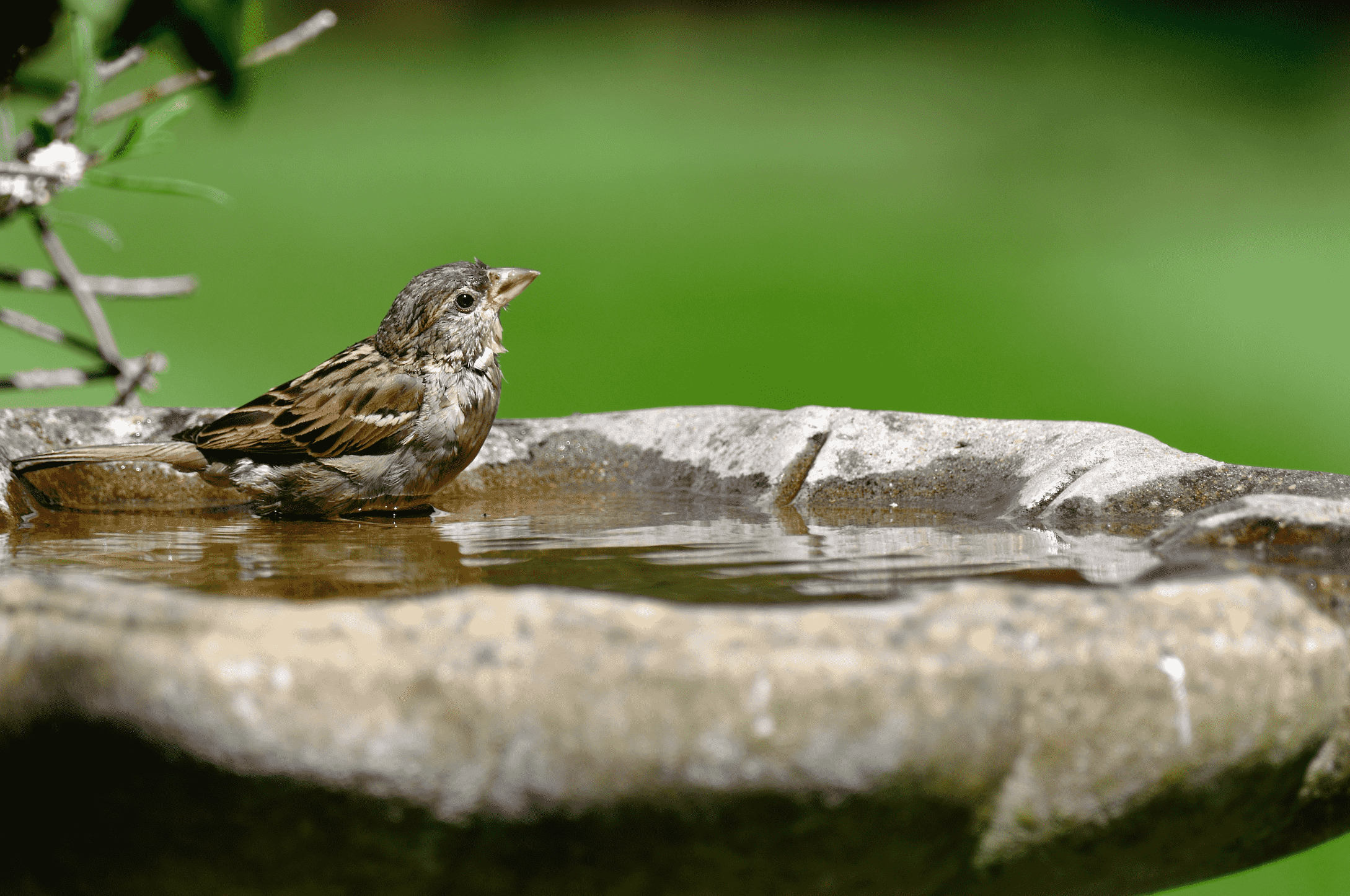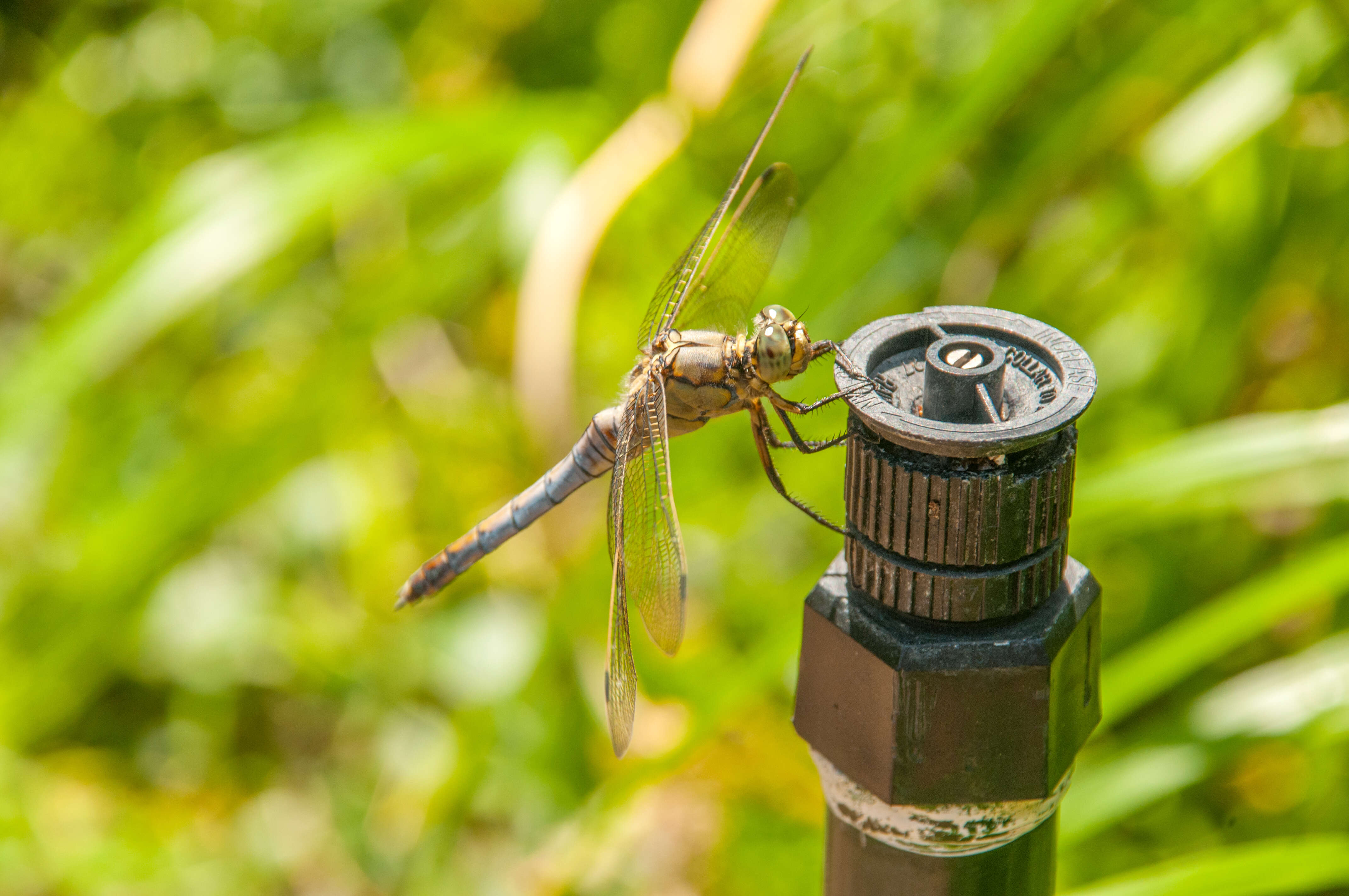
As summers continue to get hotter with record-breaking temperatures, there are simple things you can do to protect the wild animals where you live.
While most of us have a number of options to hide from the sun and scorching heat, such as in pools, the ocean, or in our own homes, wild animals are not able to do the same—and with record-breaking temperatures soaring around the United States as the climate crisis worsens, you can help out the wild animals in your neighborhoods in a few simple ways!
Provide Water Sources
Simple ways you can help wild animals can also make your gardens look pretty! By adding bird baths with shallow water or ponds with waterfall features, you can provide animals with fresh water on particularly hot days while adding a beautiful feature to your yards.

Additionally, you can put out water stations, such as shallow dishes of water for small mammals, reptiles, and insects. This can be particularly useful if you don’t have access to a full yard but do have some outside or communal space!
If you have a bird bath or water station, make sure it has shallow water and fill parts with stones or sticks so that insects such as honey and bumblebees don’t drown! It’s also particularly important to change the water regularly to keep it clean and cool.
Maintain Natural Habitats and Adapt Your Landscape
If you have lawns (or native wildflower lawns—even better!) and gardens, it’s important to keep them well-watered to keep the plants alive and provide shelter and food. Using sprinklers can also give wild animals the opportunity to drink fresh water or cool off in puddles or the spray of the sprinkler.

When planting gardens, consider adding some large bushes that can provide cool, shaded hiding spots and mulching garden beds to retain moisture while keeping the ground cooler for ground-dwelling creatures. If you have an elevated porch, allow it to be accessible to do the same thing—especially if you’re not using it and it’s empty! You might find that stray cats, young animals, and other mammals use the shade from the porch to cool off during the hottest part of the day.
Avoid Chemical Use
Pesticides and herbicides can harm wild animals even when they’re not struggling during soaring temperatures, but doing so during heatwaves just exacerbates the issue for wild animals already in peril. Plus, avoiding using these chemicals will actually help your lawn (as these pesticides can burn and kill your grass!).
What To Do If You Find an Animal in Distress
First, don’t assume someone else will help an animal in distress. If you see an animal struggling, please take action right away. Here are a few ways to help an animal in distress if you come across one.
Tips for Immediate Action:
- Hydration and Shade: If safe, provide water and shade to the animal.
- Minimize Handling: Only handle the animal if absolutely necessary and wear gloves.
- Keep Calm and Quiet: Keep the animal in a quiet and calm environment until help arrives.
- Do Not Feed: Avoid feeding the animal as it might require specific dietary needs.
Regional and Local Resources
Check your local Department of Environmental Conservation (DEC) website or online directories for local wildlife rehabilitators in your area. They’re usually listed by county and species they specialize in, so you can find someone to help you as soon as possible.
Call your local humane society. While they might not be able to help, they can direct you to appropriate wildlife experts—or even have staffers who volunteer to rehabilitate wildlife in their spare time!
Check out the National Wildlife Rehabilitators Association’s website for animal-specific resources or AnimalHelpNow for emergency rehabilitators. You can also check out the Wildlife Rescue Directory from OnTheFeeder.
If you’re looking to become a wildlife rehabilitator, many local wildlife centers or organizations offer workshops on wildlife first aid and rescue. You can take an 8-hour RVS training course and receive your rehabilitation license through your state’s DEC website.
By utilizing a combination of these tools, you can provide appropriate help to wildlife in distress and ensure they receive the best care possible. Thank you for caring about wild animals!